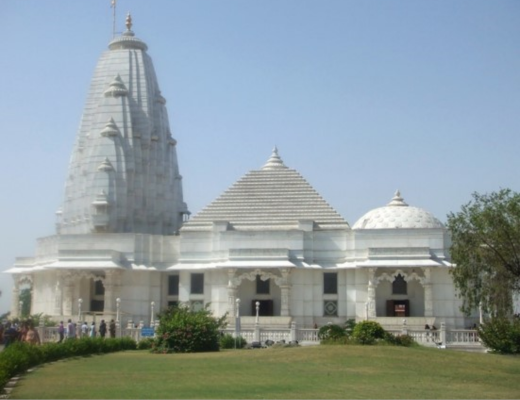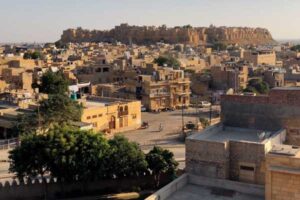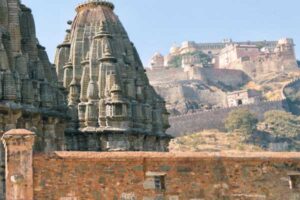Ganesh Temple Moti Dungri Jaipur
Ganesh Temple Moti Dungri Jaipur
Overview Of Moti Dungri
Lord Ganesha is revered not merely for his special place in Hindu mythology, but also for the special place he has in the hearts of his devotees. At the outset of every ritual or festival celebrated by Hindus, prayers are made to the god Ganesha. Several faiths’ holy texts identify him as the deity to whom prayers are addressed before every new venture is launched. There are several famous temples in India devoted to the deity Ganesha, and Jaipur takes special pride in housing one of these structures.
Hundreds of devotees wait patiently each day to pay their respects at the gate of the Moti Doongri temple, which is among the most popular and highly regarded temples in all of Jaipur. Devotees to this temple after celebrating major life events such as marriage, the acquisition of a first car, or even before applying for a visa. The city’s citizens hold the temple in the highest respect, and it is central to their way of life.
Visiting this Ganesh Temple is a perfect plan. There is a temple backstory. It tells about the King of Mewar. He was weary after a long journey. so he dragged a Ganesh idol behind him on a bullock cart as he made his way back to his castle. The king planned to build a temple. He decided that wherever the cart stops first would be the site of the structure. The legends say the cart made its stop at the foot of the Moti Dungri hills. Indeed, that’s where you’ll find the Ganesh temple present day.
COST EFFICIENT SERVICES
Provide highly efficient services at very competitive prices.
ATTRACTIVE PACKAGES
Exclusively customized packages for Rajasthan & India tours.
CAR RENTAL SERVICES
Hire a taxicab in Jaipur for local sightseeing and outstation needs.
100% SATISFACTION
Our company provides 100% customer satisfaction as it is our top priority.
24+ Year
Experience
20+ Tour
Destinations
15000 + Happy
Customers
History of Moti Dungri
In the 17th century, legend has it that the King of Mewar was returning to his realm while pulling an idol of Lord Ganesha behind a bullock cart. The myth goes something like this. He announced that the site where the bullock waggon had stopped would become a shrine to the Lord. The waggon stopped at the foot of the mountain that would become the temple’s permanent home, Moti Doongri. Seth Jairam Paliwal and Mahant Shiv Narain were entrusted with the temple’s construction, and they completed it four years later in 1761.
The temple was built within a building styled like a Scottish castle at the request of Maharaja Madho Singh’s son. While the royal grounds are private property and off-limits to visitors, the temple itself is open to anybody. This temple goes by the name Moti Doongri Temple as well, after the nearby hill on which it sits. Moti means “pearl” in English, whereas “Doongri” means “little hill” in the local language.
What To See
With its location on top of a tiny hill in Jaipur, Rajasthan is the Moti Dungri Ganesh temple, which has the equally stunning Moti Dungri Palace all around. The palace walls that enclose the temple grounds are reminiscent of Scottish castles. However, being a private residence, the palace is not open to the public. The temple, which spans around two km, has the system to represent contemporary trends in Indian architecture.
The outside of the temple is as impressive to the inside. There is a huge statue of Ganesha at the temple, shown sitting with his trunk looking to the left. Lord Ganesha is often shown with his elephant trunk pointing to the right, while left-pointing statues are considered very auspicious.
The idol has a wonderful luminosity that glows through its brilliant orange hue and its thick, glossy black hair. The silver crown sits on the head of the gorgeous idol, who is dressed in expensive textiles and jewellery.
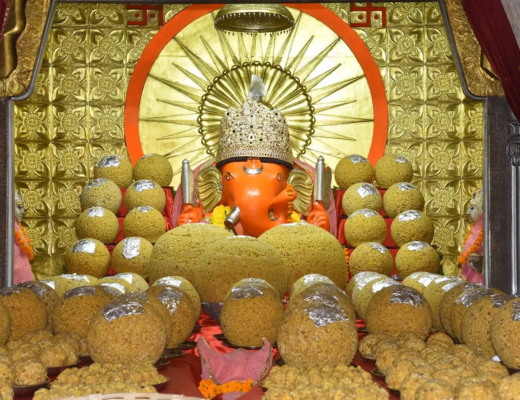
A large mushak figure, often called a rat, is placed at Lord Ganesha’s feet. Lord Ganesha is said to travel on the back of a creature called a Mushak. The idol has a golden and silver throne propped up by two massive silver pillars on each side. A massive golden chakra is mounted on the wall behind the idol, and the chhatra (or umbrella) that tops the statue is likewise made of gold.
The temple’s three domes stand for the three major faiths practised in our nation. The temple is famous for its intricate stonework and marble latticework. Art enthusiasts will find the various legendary motifs etched on the marble stones to be very intriguing. The temple’s guests feels the attraction for this place by its stunning architecture. Therefore, the stunning statue of Ganesha stands at the temple’s altar. Ganesh Chathurthi is celebrated by many, and the temple is decked up in its finest for the event. You can’t go to Rajasthan and not see this cultural landmark in our city’s pink district.
Architecture of Moti Doongri
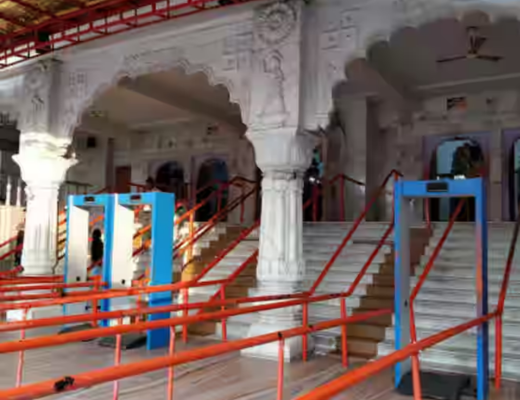
The temple’s grounds span two km, and the building itself is capped by three domes, one for each of the three main religions practised in the country. The complex latticework done in marble makes this temple, cut from stone, seem even more impressive. Visitors are sometimes left speechless by the mythological depictions that decorate the walls.
The temple has two ledges, one on each side of the entryway, where worshippers may rest their weary legs after a long session of prayer. Many believe that Lord Ganesha would be delighted if worshippers take a little pause to sit down after saying their prayers rather than rushing off to their homes.
How to reach
Tourist-friendly Jaipur is near airports, train stations, and major roads. Indeed, the area’s strong travel connections make visiting the temple simple from anywhere in the world. Moreover, luxury buses, one of the state’s numerous comfortable forms of public transportation, are available for use by visitors throughout their time in Rajasthan.
Temples Near Moti Dungri
There are three more temples located in close proximity to Moti Doongri, and many worshippers make a point of visiting them as well. Laddoos and other religious offerings are sold by the dozens at nearby sweet shops. At the base of the stairs leading to the temple, there are rows of taps that provide potable water.
Lord Shiva temple
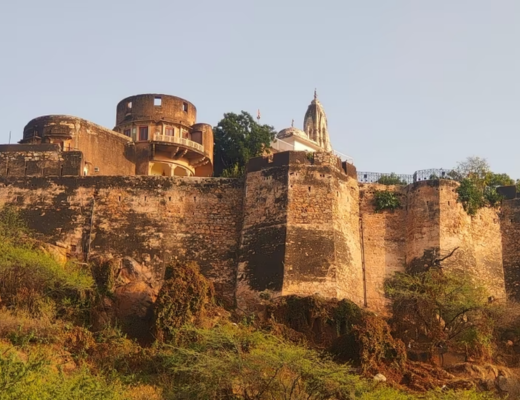
Though modest in size, this temple has great significance for its faithful community. Since Monday is Lord Shiva’s day, devotees go there early each week on that day to do puja (worship) and present milk, flowers, and other offerings to the temple’s Shivalinga and other idols.
Hanuman temple
To the right of the Moti Doongri temple is another building that serves as a holy site for the Hindu deities Hanuman and Durga. Especially on Tuesdays, which are considered his most important day of devotion, the Hanuman temple is bustling with devotees. Both statues sit side by side in the same temple, accessible by a set of stairs. After praying, visitors to Moti Doongri often linger on the shrine’s stone stairs.
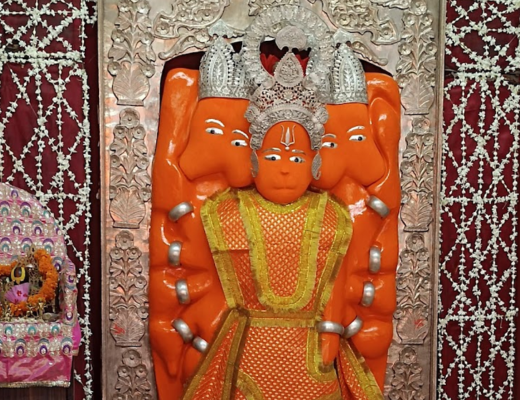
Best Time To Visit
As far as they’re concerned, there’s never a suitable moment to go to a temple since worshippers may go whenever they like. While the Moti Doongri temple has a large number of people every day, Wednesday is always one of the busiest days there. Lord Ganesha is revered as Mercury’s patron god, and Wednesday is considered to be Mercury’s day. A small market is set up in front of the temple on this day of the week. The road leading up to the temple is lined with hawkers selling toys, candies, and other knickknacks every day of the week. On this day, vehicles will be prohibited from coming within a certain distance of the temple’s main gate, and obstacles will be set up to prevent entry.
Each day of the week save Sunday, Darshan is conducted seven times during the day. Devotees offer homage to Lord Ganesha via chanting aartis, bhajans, and kirtans during the darshan. The worshippers also conduct aarti when the curtains are drawn back so that Lord Ganesha may make an appearance. A large number of devotees from the city and the neighbouring cities attend the temple on special occasions like Ganesha Chaturthi, Annkuta, Janmashtami, and Paush Bada. During these events, the stairs leading up to the shrine are decorated beautifully.

